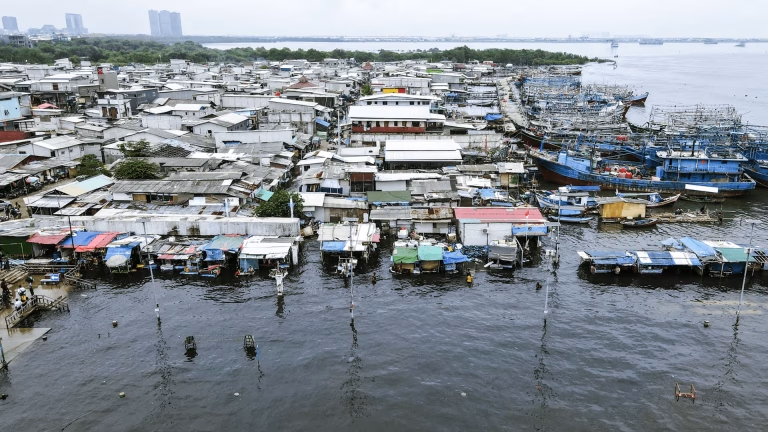Coastal land subsidence threatens many major cities worldwide, especially Jakarta, Indonesia. This slow sinking of land, combined with rising seas, causes frequent floods, damages infrastructure, and displaces millions. To protect vulnerable urban populations, we must understand the causes and find practical solutions for coastal land subsidence.
The main cause of coastal land subsidence is excessive groundwater extraction. As cities grow, demand for fresh water increases. Many homes and industries drill wells to access underground water. This compresses the soil and makes the ground sink. Jakarta, built on soft delta land, has sunk nearly four meters since 1970. Urban development, natural soil settling, and tectonic shifts also play roles, but groundwater pumping is the biggest factor.
The impacts of coastal land subsidence are serious. In Jakarta and other cities, homes flood often. Residents deal with damp walls, cracked floors, and must raise their buildings regularly to avoid water damage. The sinking land speeds up “relative sea level rise,” making floods worse. In Tianjin, China, the sinking was so bad that authorities evacuated thousands because of dangerous cracks in buildings and roads.

Cities worldwide face this challenge. Lagos in Nigeria suffers from rapid urban growth and poor water infrastructure, which leads to groundwater overuse and flooding. Tokyo once faced severe sinking but slowed it by regulating groundwater use and improving water management in the 1970s. Tokyo’s approach works well but is costly and hard to apply everywhere.
Some cities try “sponge city” designs. They replace concrete with surfaces that absorb water, add parks, wetlands, and green spaces. This helps soak up rainwater and reduces flooding and groundwater stress. While sea walls and dykes help stop floods, they can also trap water inland, causing a “bowl effect.” Effective solutions combine smart water policies, urban design, and strong political commitment.
If cities do not act, millions will face displacement, property loss, and health risks. Jakarta is building a new capital on a safer island to escape this crisis. But existing cities need sustainable water and urban management now. As populations rise and climate change worsens, stopping coastal land subsidence requires smart policies and new technology.
For more on water management, visit Tokyo Waterworks Management and see the United Nations Habitat report on urban resilience.
Explore related topics on sustainable planning and flood prevention here and here.

